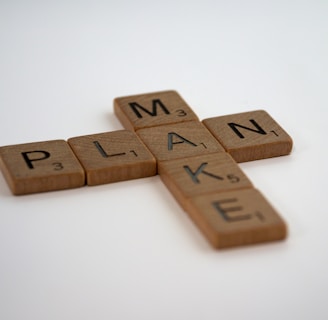To do list of February: Plan and Prepare!
In February, let's focus on the underwater part. Did you know that most easy gains in shape, smoothness and hydrodynamics can be made here?
2 min read


February is the month to plan and prepare. Besides planning your loved one's Valentine's gift, there is more planning and preparing ahead for the other love: the floating one.
With the yachting plans done and dusted in December and January, let's take a closer look if the boat is ready for those plans ahead. Let's focus on the underwater part. Did you know that most gains can be made here? That applies to all of us on the water, whether on a sailing yacht, motor yacht, or commercial vessel. We'll stay in the leisure world in this article.
So, back to the easy gains of this 'low-hanging fruit' underwater: shape, smoothness, and hydrodynamics.
The basics: a clean underwater hull. Throughout the year, some antifoulings like a racing-antifouling are smoother than others. Smoothness means less resistance, and that’s exactly what racers want. The flip side of smooth antifouling, or no antifouling, is that it needs continuous cleaning. How often depends on where you are. True racers don’t mind, as they clean the hull anyway before any race. A clean hull means less resistance. An easy gain to all yachts.
Another point of attention: what is the state of your antifouling? Is your current system okay for your yachting plans? Can you finish it off this year with just one more layer? Or do you have big works ahead of you to scratch off all and start with a new layering system? In any case, make sure to invest in the preparation of the hull before you add layers on top.
If you do the work yourself or with your teammates, for the best result try to plan the works with a minimum temperature of 15 degrees Celsius, not less. February planning usually gives you still plenty of time slots with the boatyard of your choice.
The hydrodynamics part is another one. Yacht designers put a lot of thought into the design of the hull, keel, and rudder. That’s all theory on paper. It’s good to verify if the theory has been put into practice by yacht builders.
With existing yachts, often due to sanding work on the underwater hull, the keel and/or rudder no longer has the shape of the original design. As a result, the sailing behavior is also no longer as intended by the designer. Should the handling feel different on port and starboard sides, it is a sign, that it is wise to have an expert look at it when the boat is on shore.
The expert checks if the keel and/or rudder are the same on both sides and if it differs from the original design. Many yacht designers are reluctant to share their original designs. If the shape of the keel and/or rudder is no longer correct, the expert re-measures it and matches it to the original design. The expert will use the new moulds to restore the keel and/or rudder to the shape as intended. In terms of timing, it is more convenient to do this before the antifouling is applied.
Need assistance or advice? Our experts and designers have measured, shaped, and optimized many keels and rudder blades, and are ready to help you!

www.projectmadeinholland.com
team@projectmadeinholland.com
VAT# NL860494767B01
Chamber of C.# 76064387
